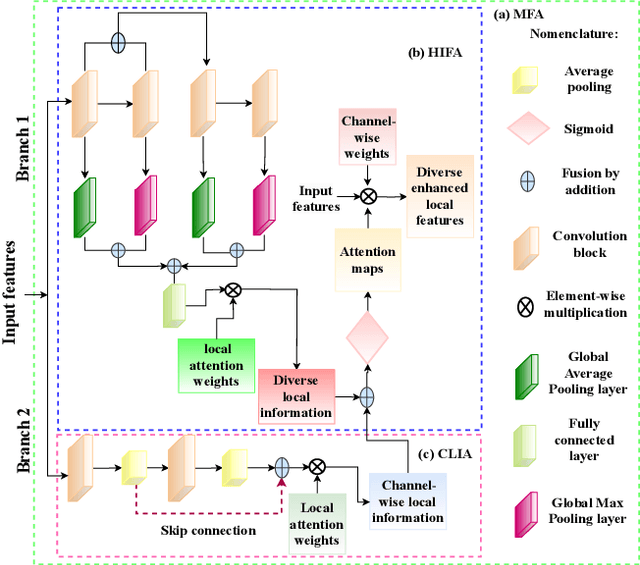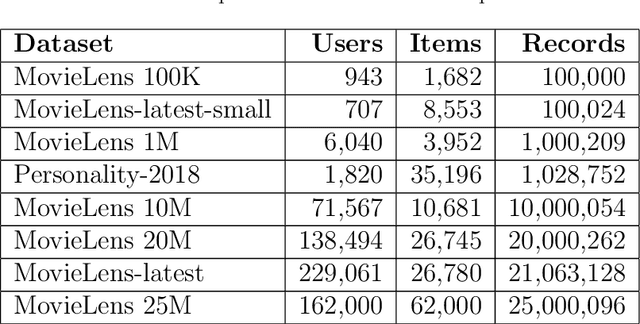Vikas Kumar
Geometric Preference Elicitation for Minimax Regret Optimization in Uncertainty Matroids
Mar 25, 2025Abstract:This paper presents an efficient preference elicitation framework for uncertain matroid optimization, where precise weight information is unavailable, but insights into possible weight values are accessible. The core innovation of our approach lies in its ability to systematically elicit user preferences, aligning the optimization process more closely with decision-makers' objectives. By incrementally querying preferences between pairs of elements, we iteratively refine the parametric uncertainty regions, leveraging the structural properties of matroids. Our method aims to achieve the exact optimum by reducing regret with a few elicitation rounds. Additionally, our approach avoids the computation of Minimax Regret and the use of Linear programming solvers at every iteration, unlike previous methods. Experimental results on four standard matroids demonstrate that our method reaches optimality more quickly and with fewer preference queries than existing techniques.
Multimodal Fusion Learning with Dual Attention for Medical Imaging
Dec 02, 2024



Abstract:Multimodal fusion learning has shown significant promise in classifying various diseases such as skin cancer and brain tumors. However, existing methods face three key limitations. First, they often lack generalizability to other diagnosis tasks due to their focus on a particular disease. Second, they do not fully leverage multiple health records from diverse modalities to learn robust complementary information. And finally, they typically rely on a single attention mechanism, missing the benefits of multiple attention strategies within and across various modalities. To address these issues, this paper proposes a dual robust information fusion attention mechanism (DRIFA) that leverages two attention modules, i.e. multi-branch fusion attention module and the multimodal information fusion attention module. DRIFA can be integrated with any deep neural network, forming a multimodal fusion learning framework denoted as DRIFA-Net. We show that the multi-branch fusion attention of DRIFA learns enhanced representations for each modality, such as dermoscopy, pap smear, MRI, and CT-scan, whereas multimodal information fusion attention module learns more refined multimodal shared representations, improving the network's generalization across multiple tasks and enhancing overall performance. Additionally, to estimate the uncertainty of DRIFA-Net predictions, we have employed an ensemble Monte Carlo dropout strategy. Extensive experiments on five publicly available datasets with diverse modalities demonstrate that our approach consistently outperforms state-of-the-art methods. The code is available at https://github.com/misti1203/DRIFA-Net.
* 10 pages
Citation-Based Summarization of Landmark Judgments
Jun 16, 2024Abstract:Landmark judgments are of prime importance in the Common Law System because of their exceptional jurisprudence and frequent references in other judgments. In this work, we leverage contextual references available in citing judgments to create an extractive summary of the target judgment. We evaluate the proposed algorithm on two datasets curated from the judgments of Indian Courts and find the results promising.
Human Centered AI for Indian Legal Text Analytics
Mar 16, 2024Abstract:Legal research is a crucial task in the practice of law. It requires intense human effort and intellectual prudence to research a legal case and prepare arguments. Recent boom in generative AI has not translated to proportionate rise in impactful legal applications, because of low trustworthiness and and the scarcity of specialized datasets for training Large Language Models (LLMs). This position paper explores the potential of LLMs within Legal Text Analytics (LTA), highlighting specific areas where the integration of human expertise can significantly enhance their performance to match that of experts. We introduce a novel dataset and describe a human centered, compound AI system that principally incorporates human inputs for performing LTA tasks with LLMs.
Infusing Knowledge into Large Language Models with Contextual Prompts
Mar 03, 2024Abstract:Knowledge infusion is a promising method for enhancing Large Language Models for domain-specific NLP tasks rather than pre-training models over large data from scratch. These augmented LLMs typically depend on additional pre-training or knowledge prompts from an existing knowledge graph, which is impractical in many applications. In contrast, knowledge infusion directly from relevant documents is more generalisable and alleviates the need for structured knowledge graphs while also being useful for entities that are usually not found in any knowledge graph. With this motivation, we propose a simple yet generalisable approach for knowledge infusion by generating prompts from the context in the input text. Our experiments show the effectiveness of our approach which we evaluate by probing the fine-tuned LLMs.
Deep dive into language traits of AI-generated Abstracts
Dec 17, 2023Abstract:Generative language models, such as ChatGPT, have garnered attention for their ability to generate human-like writing in various fields, including academic research. The rapid proliferation of generated texts has bolstered the need for automatic identification to uphold transparency and trust in the information. However, these generated texts closely resemble human writing and often have subtle differences in the grammatical structure, tones, and patterns, which makes systematic scrutinization challenging. In this work, we attempt to detect the Abstracts generated by ChatGPT, which are much shorter in length and bounded. We extract the texts semantic and lexical properties and observe that traditional machine learning models can confidently detect these Abstracts.
UniRecSys: A Unified Framework for Personalized, Group, Package, and Package-to-Group Recommendations
Aug 08, 2023Abstract:Recommender systems aim to enhance the overall user experience by providing tailored recommendations for a variety of products and services. These systems help users make more informed decisions, leading to greater user satisfaction with the platform. However, the implementation of these systems largely depends on the context, which can vary from recommending an item or package to a user or a group. This requires careful exploration of several models during the deployment, as there is no comprehensive and unified approach that deals with recommendations at different levels. Furthermore, these individual models must be closely attuned to their generated recommendations depending on the context to prevent significant variation in their generated recommendations. In this paper, we propose a novel unified recommendation framework that addresses all four recommendation tasks, namely personalized, group, package, or package-to-group recommendation, filling the gap in the current research landscape. The proposed framework can be integrated with most of the traditional matrix factorization-based collaborative filtering models. The idea is to enhance the formulation of the existing approaches by incorporating components focusing on the exploitation of the group and package latent factors. These components also help in exploiting a rich latent representation of the user/item by enforcing them to align closely with their corresponding group/package representation. We consider two prominent CF techniques, Regularized Matrix Factorization and Maximum Margin Matrix factorization, as the baseline models and demonstrate their customization to various recommendation tasks. Experiment results on two publicly available datasets are reported, comparing them to other baseline approaches that consider individual rating feedback for group or package recommendations.
Conformal Group Recommender System
Jul 22, 2023



Abstract:Group recommender systems (GRS) are critical in discovering relevant items from a near-infinite inventory based on group preferences rather than individual preferences, like recommending a movie, restaurant, or tourist destination to a group of individuals. The traditional models of group recommendation are designed to act like a black box with a strict focus on improving recommendation accuracy, and most often, they place the onus on the users to interpret recommendations. In recent years, the focus of Recommender Systems (RS) research has shifted away from merely improving recommendation accuracy towards value additions such as confidence and explanation. In this work, we propose a conformal prediction framework that provides a measure of confidence with prediction in conjunction with a group recommender system to augment the system-generated plain recommendations. In the context of group recommender systems, we propose various nonconformity measures that play a vital role in the efficiency of the conformal framework. We also show that defined nonconformity satisfies the exchangeability property. Experimental results demonstrate the effectiveness of the proposed approach over several benchmark datasets. Furthermore, our proposed approach also satisfies validity and efficiency properties.
Cross-domain Recommender Systems via Multimodal Domain Adaptation
Jul 02, 2023Abstract:Collaborative Filtering (CF) has emerged as one of the most prominent implementation strategies for building recommender systems. The key idea is to exploit the usage patterns of individuals to generate personalized recommendations. CF techniques, especially for newly launched platforms, often face a critical issue known as the data sparsity problem, which greatly limits their performance. Several approaches in the literature have been proposed to tackle the problem of data sparsity, among which cross-domain collaborative filtering (CDCF) has gained significant attention in the recent past. In order to compensate for the scarcity of available feedback in a target domain, the CDCF approach utilizes information available in other auxiliary domains. Traditional CDCF approaches primarily focus on finding a common set of entities (users or items) across the domains, which then act as a conduit for knowledge transfer. Nevertheless, most real-world datasets are collected from different domains, so they often lack information about anchor points or reference information for entity alignment. This paper introduces a domain adaptation technique to align the embeddings of entities across the two domains. Our approach first exploits the available textual and visual information to independently learn a multi-view latent representation for each entity in the auxiliary and target domains. The different representations of the entity are then fused to generate the corresponding unified representation. A domain classifier is then trained to learn the embedding for the domain alignment by fixing the unified features as the anchor points. Experiments on two publicly benchmark datasets indicate the effectiveness of our proposed approach.
Data augmentation for recommender system: A semi-supervised approach using maximum margin matrix factorization
Jun 22, 2023Abstract:Collaborative filtering (CF) has become a popular method for developing recommender systems (RS) where ratings of a user for new items is predicted based on her past preferences and available preference information of other users. Despite the popularity of CF-based methods, their performance is often greatly limited by the sparsity of observed entries. In this study, we explore the data augmentation and refinement aspects of Maximum Margin Matrix Factorization (MMMF), a widely accepted CF technique for the rating predictions, which have not been investigated before. We exploit the inherent characteristics of CF algorithms to assess the confidence level of individual ratings and propose a semi-supervised approach for rating augmentation based on self-training. We hypothesize that any CF algorithm's predictions with low confidence are due to some deficiency in the training data and hence, the performance of the algorithm can be improved by adopting a systematic data augmentation strategy. We iteratively use some of the ratings predicted with high confidence to augment the training data and remove low-confidence entries through a refinement process. By repeating this process, the system learns to improve prediction accuracy. Our method is experimentally evaluated on several state-of-the-art CF algorithms and leads to informative rating augmentation, improving the performance of the baseline approaches.
 Add to Chrome
Add to Chrome Add to Firefox
Add to Firefox Add to Edge
Add to Edge